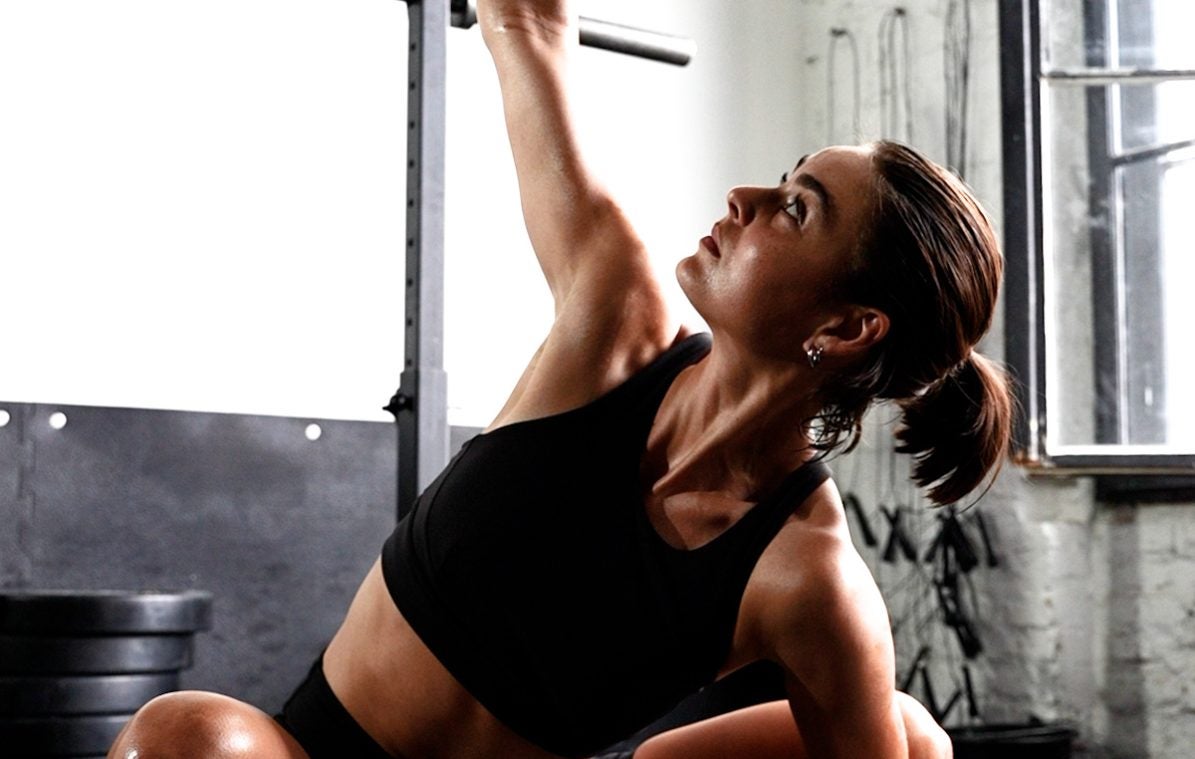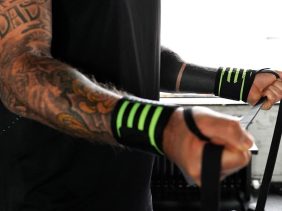More performance in the gym through mobility training
 © foodspring
© foodspring
Stronger, faster, higher – the goals we want to achieve through our strength training may differ, but we all have one thing in common: we want to continually increase our performance! After all, we all want to avoid hitting a plateau with our training. There are several variables to take a look at when performance seems to stagnate, one of which is mobility training. But what does ‘mobility’ actually mean and how exactly does mobility training help you in strength training? Here, we’ll explain the most important facts about mobility and also reveal what your central nervous system has to do with it.
Looking for another easy way to instantly take your workout to the next level? With our Energy Aminos you get the optimal combination of caffeine and BCAAs, so nothing stands in the way of an intense workout!
What is meant by mobility?
Before we tell you how to improve your performance in training, we must first clarify what we mean by mobility here, since the word often is used to mean many different things. Mobility is one of your motor skills.
The other motor skills are:
- Speed
- Strength
- Endurance
- Coordination
Mobility is the ability to use the full range of motion of a joint at will. For optimal movement, both mobility and flexibility are important.
Mobility describes the ability to perform movement actively (with muscles engaged) and in a controlled manner within the full range of motion of the respective joint. Flexibility, on the other hand, is more passive as it describes the elasticity of muscles and connective tissue.
Note: not every joint needs equal mobility. According to the ‘joint-by-joint approach’, some joints require a greater focus on mobility, and some require a greater focus on stability. Grey & Boyle, sports scientists and developers of this concept, put it this way: the body is made up of joints stacked on top of each other, with each joint performing different functions and therefore prone to different dysfunctions. This results in different requirements for your mobility training depending on the joint.
Example: Squat
We need ankle mobility, knee stability, hip mobility, lumbar spine stability, thoracic spine mobility, and shoulder stability for an optimal squat. Mobility and stability are not mutually exclusive.
What factors determine your mobility?
Excuses like “I’m just not that agile” aren’t valid when it comes to mobility! There are many factors that influence our mobility. For a better understanding, we will divide them into two groups here.
#1 Musculoskeletal system: Bony structures, ligamentous and capsular structures, muscles, connective tissue/fascia.
#2 Nervous system: Central nervous system (brain and spinal cord)
Individual factors such as age, gender, and joint wear, as well as external influences such as time of day and the weather also play a role. And as unfair as it may seem, some people are more mobile than others purely on an anatomical level. But that doesn’t mean you can’t and shouldn’t still actively work on it. After all, we start losing mobility as early as the age of twelve!
Need more personalized tips for your workout? With just a few clicks, our Body Check gives you not only that, but also personalized nutrition tips and product recommendations to help you reach your goals even faster.Here’s how to upgrade your strength training
What is the benefit of mobility training?
Investing 5-10 minutes in your mobility training on a regular basis before your gym session will significantly improve your performance for the rest of your workout! But what exactly does mobility training affect?
- Nutrient supply
Your joints and the surrounding structures stay optimally supplied with nutrients. Mobility training helps your body produce more synovial fluid, which helps your joints move more smoothly.
- Range of Motion
Improved stimulus transmission ensures that your brain receives more information about your joint position, movement, and force and keeps it feeling safe. This confidence results in a greater range of motion, like performing a deeper squat.
- Technique
Your optimized range of motion is followed by an improvement in your technique and execution.
- Energy
Improved technique leads to an improvement in your intra- and intermuscular coordination, which means that you can activate more muscle fibers and better muscular interaction. This economization allows you to exert more energy.
- Security
Your risk of injury during training is reduced.
- Regeneration
An improved nutrient supply allows your body to regenerate better and spare you from dreaded muscle soreness (or at least feel less of it) following your workout. In addition, your muscles will be happy about a hot shower, a protein-rich meal, and our Recovery Aminos afterwards.
Remember – a movement chain is only as strong as its weakest link.
What role does the nervous system play?
Mobility training activates not only your musculoskeletal system, but also your central nervous system (CNS). To simplify the difference between the two systems, think of the musculoskeletal system like hardware and the CNS like software.
Your CNS isn’t interested in your performance in training, our strongest supplements in the Muscle Pack Pro take care of that. Your CNS has the task to protect you and your body. If it senses too much of a load during training, it plays a crucial role in decreasing your performance to control the threat and reduce the risk of injury: you go limp.
Conversely, this means that your CNS needs to feel safe in order to be able to summon your full performance capacity and train in full range of motion. And this is where mobility training comes in, activating the following receptors:
- Muscle spindles
- Golgi tendon organs
- Ruffini and Pacinian corpuscles
- Nociceptors
Improved information transmission gives your CNS a sense of security. Your squats will be deeper, your deadlifts will come more from the hips, and your shoulders will allow a full radius pull-up.
What should your mobility training look like?
Just as you select the exercises in your training plan according to certain criteria, you should also design your mobility training. It should be individually adapted to your training plan and the needs of your body. For example, if squats are on your training plan, you should prioritize mobilizing your ankles, hips, and spine. A great general example to cover your bases is rolling with a fascia roller, which can help activate the receptors mentioned above and thus the information transmission of the CNS.
Summary
- For the most efficient training and a steady increase in your training performance, your mobility, which you can influence through targeted training, plays a major role.
- Mobility training not only focuses on your musculoskeletal system, but also your central nervous system.
- The results are a greater range of motion, economized muscle work, and a lower risk of injury – all in all, increased training performance!
- After your workout, a creamy Whey Protein Shake* provides you with everything you need for muscle growth.
More things to know from foodspring:
- Feel Your Best with These Easy Mobility Exercises
- All About Stretching: Your next performance booster
- Why you should add balance exercises to your life
- Morning Stretches to Wake Up Your Body and Mind
- 13 back strengthening exercises for a lovely limber lumbar
*Proteins contribute to an increase in muscle mass.
Sources for this article
We at foodspring use only high-quality sources, including peer-reviewed studies, to support the facts within our articles. Read our editorial policy to learn more about how we fact-check and keep our content accurate, reliable, and trustworthy.





























